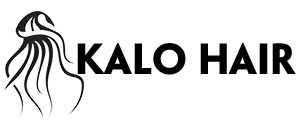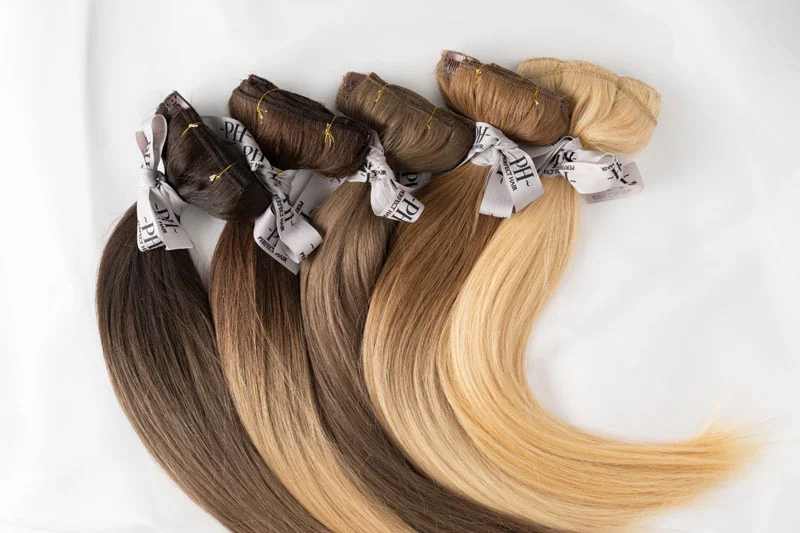Clip-in hair extensions are a game-changer in the beauty world, offering instant volume, length, and style versatility without long-term commitment. However, while they are convenient and relatively easy to use, improper handling can lead to damage, breakage, and unhealthy natural hair. Maintaining healthy hair while using clip-in extensions requires more than just knowing how to clip them in – it’s about understanding how to care for both your extensions and your natural hair. In this comprehensive guide, we’ll walk you through every aspect of keeping your hair strong, healthy, and beautiful while enjoying the benefits of clip-in extensions.
Introduction
Why Hair Health Matters When Using Clip-in Extensions
Many people underestimate the impact clip-in extensions can have on their natural hair if not used correctly. Prolonged tension, improper installation, or low-quality extensions can lead to weakened roots, split ends, and even permanent damage over time. Healthy hair is the foundation for any great hairstyle, and maintaining its integrity ensures that extensions remain a tool for enhancement, not harm.
Common Hair Problems Caused by Improper Use of Extensions
Improper usage of clip-in extensions can cause a range of issues, from mild scalp irritation to severe hair thinning. Tension alopecia, caused by clips pulling too tightly on the roots, is a common concern. Tangling and matting can also become persistent problems if extensions aren’t brushed or stored correctly. Awareness of these risks is the first step in preventing them.
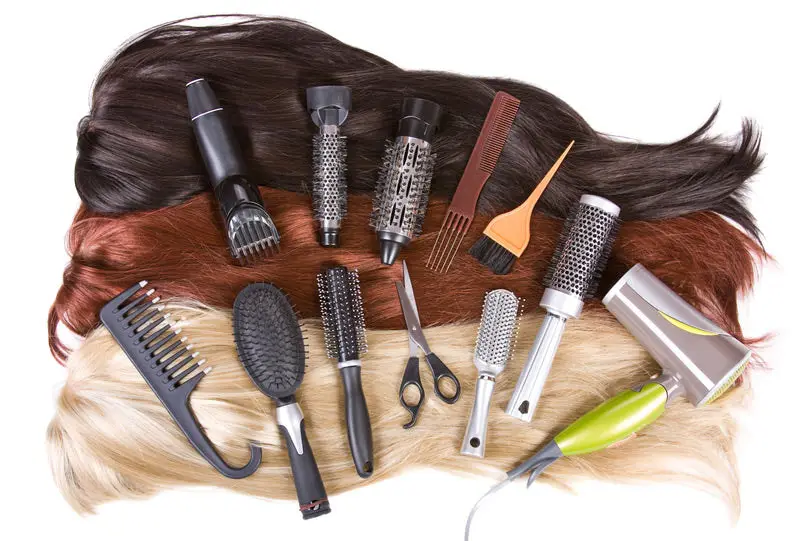
Choosing the Right Clip-in Hair Extensions for Hair Health
Human Hair vs. Synthetic Hair: Which Is Better for Hair Health?
One of the first decisions you’ll make is whether to invest in human hair or synthetic clip-in extensions. Human hair extensions are generally better for hair health because they blend seamlessly with natural hair and allow for heat styling without damage. Synthetic extensions, while more affordable, can sometimes cause friction against natural hair, leading to breakage.
Lightweight Extensions: Reducing Tension on Natural Hair
Heavier extensions can cause unnecessary stress on your natural hair, particularly if worn for long periods. Opting for lightweight extensions reduces strain on your roots and minimizes the risk of traction alopecia. Look for designs with smaller, well-spaced clips to evenly distribute weight.
Quality Matters: What to Look for in Healthy Extensions
Quality shouldn’t be compromised when it comes to extensions. High-quality clip-ins have strong, secure clips, are free from harsh chemical treatments, and have wefts that are gentle on your scalp. Investing in quality may cost more upfront, but it pays off in terms of longevity and hair health.
Preparing Your Natural Hair Before Using Clip-in Extensions
Hair Washing and Conditioning Best Practices
Healthy hair starts with a clean and well-moisturized foundation. Before applying clip-in extensions, wash your hair with a gentle shampoo to remove oil, dirt, and product buildup. Follow up with a nourishing conditioner to ensure your strands are hydrated and resilient.
Detangling Techniques to Prevent Breakage
Detangling is an often-overlooked step in hair prep. Use a wide-tooth comb to gently remove knots, starting from the ends and working your way up to the roots. Avoid aggressive brushing, as it can cause unnecessary breakage.
Scalp Care Before Applying Extensions
A healthy scalp is the root of healthy hair. Massage your scalp with a lightweight oil or serum to improve circulation and moisture balance. Ensure your scalp is free from irritation or buildup before clipping in extensions.
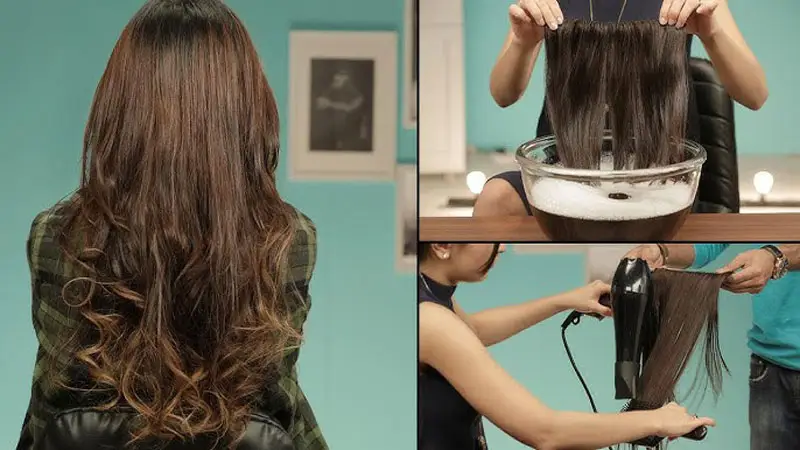
Proper Installation of Clip-in Hair Extensions
Sectioning Hair Correctly for Minimal Stress
Improper sectioning can lead to uneven weight distribution, causing certain areas of your scalp to bear more tension than others. Divide your hair into clean, even sections before clipping in extensions.
How to Avoid Pulling or Tugging During Application
Never force a clip into place if it feels tight or uncomfortable. Instead, reposition it until it feels secure without pulling on your scalp.
Tips for Even Weight Distribution Across Clips
Balance is key. Spread the wefts evenly across your head rather than concentrating them in one area. This prevents excessive weight on specific sections and reduces long-term damage.
Daily Hair Care Routine with Clip-in Extensions
Brushing Techniques for Extensions and Natural Hair
Use a soft-bristle brush or a wide-tooth comb to detangle your extensions and natural hair. Start from the tips and work upward, holding the weft securely to avoid pulling at the roots.
Recommended Hair Products for Healthy Maintenance
Choose sulfate-free shampoos, lightweight conditioners, and leave-in treatments designed for both natural hair and extensions. Avoid heavy oils and sticky products that can cause buildup.
Preventing Tangling and Matting Throughout the Day
Keep an eye on tangling, especially at the nape of your neck. Regularly run your fingers through your hair to prevent matting and ensure a smooth appearance.
Nighttime Care for Hair and Clip-in Extensions
Should You Sleep with Clip-in Extensions In?
It’s generally not recommended to sleep with clip-in extensions, as the tension and friction can damage both your natural hair and the wefts. Always remove them before bed.
Protective Hairstyles for Overnight Care
If you must sleep with extensions, secure your hair in a loose braid or ponytail to minimize tangling and friction.
Best Pillowcases and Hair Wraps for Hair Health
Silk or satin pillowcases reduce friction and help maintain moisture in your hair overnight.
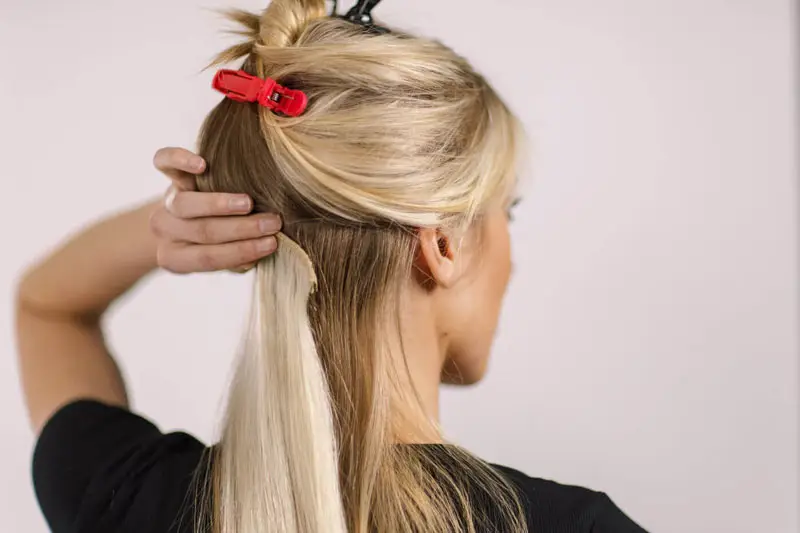
Scalp Health While Wearing Clip-in Extensions
Signs of Scalp Irritation or Damage
Be vigilant for signs of irritation, including redness, itching, or soreness. These symptoms may indicate that the extensions are too tight or have been installed improperly.
How to Keep Your Scalp Clean and Hydrated
Use a gentle scalp serum to keep your scalp moisturized. Avoid heavy products that can clog hair follicles.
When to Take a Break from Extensions
Regular breaks from extensions give your natural hair time to recover. Aim for at least one extension-free day per week.
Conclusion
Maintaining healthy hair while using clip-in extensions requires careful preparation, mindful installation, and consistent aftercare. By choosing high-quality products, handling extensions with care, and prioritizing scalp health, you can enjoy the benefits of clip-in extensions without compromising your natural hair’s integrity. Treat your hair with the same love and attention you give your favorite extensions, and both will reward you with long-lasting beauty and confidence.
Whether you’re a first-time user or a seasoned extension lover, these tips will ensure that your clip-in extensions are a tool for enhancement, not harm. Healthy hair and fabulous extensions can absolutely go hand in hand.
